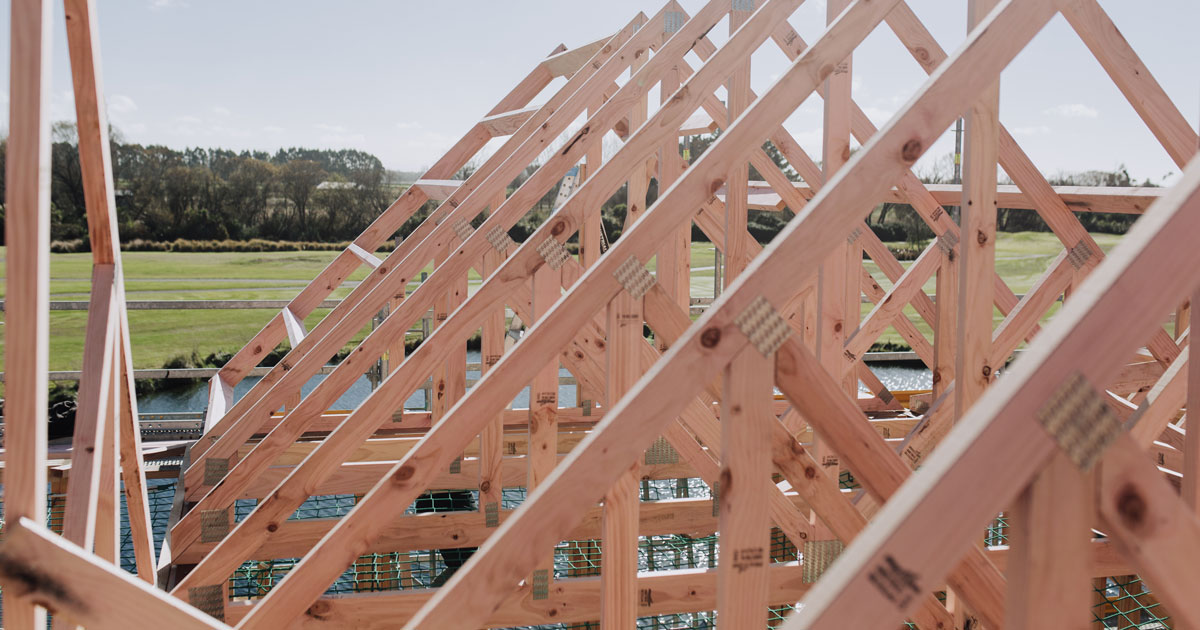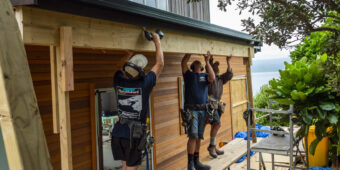Timber Grading in the 21st Century
03 Oct 2025, PlaceMakers News, Product news

PlaceMakers longtime timber supplier partner Red Stag has ramped up its quality control by combining high-speed mechanical grading with $5m worth of optical scanning technology – delivering structural timber that meets both strength standards and strict visual criteria
Believe it or not, timber with a few knots on display can be straighter, stiffer and stronger than a piece of clear timber.
The shift from visual to mechanical grading
This is why, over the past two decades, the industry has moved away from visual grading and towards Mechanical Stress Grading. Mechanically testing each board is far more accurate than making an assumption based on appearance.
Timber has always had visual characteristics, which is why Visual Grading Standards were introduced in 1938. The fact that it was introduced 80 years ago illustrates that visual characteristics in this natural and versatile product are not a recent event.
However, this method was found to be unreliable as a perfectly clear piece of timber can have vastly inferior structural properties when compared to a piece with visible elements, but which has been tested to have proven performance.
What has changed, particularly in the past 20 years, is how we allow for the natural features of wood during the design and construction of new buildings.
How mechanical stress grading works
Mechanical Stress Grading is a process whereby each and every board is subjected to a known deflection and the force to do this is measured to determine how stiff that piece is. This is accomplished automatically, at high speed, with each board being assigned a stiffness value (MOE – or Modulus of Elasticity).
Based on the least stiff section of a given board, a structural grade is applied, so it can be used in a structural load-bearing application requiring the allocated grade.
Over and above this, one piece in 600 is chosen at random and re-tested in a separate process to confirm the results. If this were not enough, to be certain, third-party auditors visit the Red Stag Timber site periodically and undertake a random test of product to verify our processes are 100% dependable.
Strength isn’t everything
As well as providing structural timber that is proven to be strong and stable, Red Stag Timber understands that builders and homeowners continue to apply value to the cosmetic appearance of timber. Guidelines are therefore put in place to ensure our SG graded timber meets visual criteria in addition to the strict mechanical properties that have already been verified.
Investing in precision: optical scanning
Red Stag Timber has invested $5m to install an Optical Scanning System that measures knot size, finished dimension, detects (and then rejects) pith, as well as looking for wane and other visual features to ensure every piece is within a predetermined range of parameters.
This system is far more reliable and consistent than relying on the human eye to perform a similar function. The timber coming from Red Stag Timber will still show a few knots, because trees need knots to grow. However, these knots will be within a strict criteria and the board will be at or above the grade shown. As a result, stiffness and strength are not compromised and the timber will perform well in a frame or truss application that demands this grade of timber.
Stricter standards for better outcomes
Red Stag Timber’s criteria for rejecting visual characteristics is more stringent than most in the market. Our visual override rejects pith – the dead wood in the low-density centre of the log – as this region is prone to cupping, bowing and twisting.
For this reason, Red Stag Timber will remain straighter and easier to work with on site. Builders and homeowners will end up with a job that meets and exceeds expectations with less wastage, less time and therefore lower overall cost and a better home.
The resources and systems that Red Stag Timber applies to quality control means the timber that arrives on site can be trusted by the builder to perform, and when accompanied by professional workmanship, the homeowner can have total confidence in the completed structure.
PlaceMakers and Red Stag Timber have maintained a longstanding relationship since Red Stag Timber was established 22 years ago. Over that time, both businesses have benefited from the connection, which continues to strengthen, with a shared focus on delivering value and quality to PlaceMakers customers.
Register to earn LBP Points Sign in



